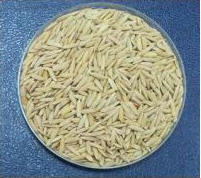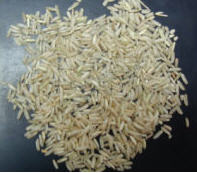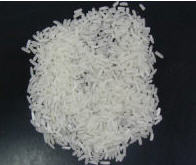Overview
Milling is a crucial step in post-production of rice. The basic objective of a rice milling system is to remove the husk and the bran layers, and produce an edible, white rice kernel that is sufficiently milled and free of impurities. Depending on the requirements of the customer, the rice should have a minimum of broken kernels.
Most rice varieties are composed of roughly 20% rice hull, 11% bran layers, and 69% starchy endosperm, also referred to as the total milled rice. Total milled rice contains whole grains or head rice, and brokens. The by-products in rice milling are rice hull, rice germ and bran layers, and fine brokens.
A rice milling system can be a simple one or two step process, or a multi stage process. In a one step milling process, husk and bran removal are done in one pass and milled or white rice is produced directly out of paddy. In a two step process, removing husk and removing bran are done separately, and brown rice is produced as an intermediate product. In multistage milling, rice will undergo a number of different processing steps.
Major Processes
A commercial rice miller will have following objectives:
produce edible rice that appeals to the customer- i.e. rice that is sufficiently milled and free of husks, stones, and other non-grain materials maximize the total milled rice recovery out of paddy minimize grain breakage
Rice Milling Terminolory
Rough rice paddy rice – Rice as it comes from the field. Rice kernels are still encased in their inedible, protective hull.
Brown rice or husked rice – the least processed form of rice. It has the outer hull removed, but still retains the bran layers that give it a characteristic tan color and nut-like flavor. Brown rice is edible but chewier texture than white rice. Cooking time of brown rice is longer than milled rice.
Milled rice – white rice, or rice after milling which includes removing all or part of the bran and germ from the rough rice
Milling recovery – total milled rice obtained out of paddy; expressed as weight percentage of milled rice (including brokens) obtained from a sample of paddy. The maximum milling recovery is 69-70% depending on rice variety, but because of grain imperfections and the presence of unfilled grains, commercial millers are happy when they achieve 65% milling recovery. Some village type rice mills have 55% or lower milling recovery.
Milling degree – a measure of the amount of bran removed from the brown rice
Head rice – milled rice with length greater or equal to three quarters of the average length of the whole kernel. It is often expressed on a percent paddy or rough rice basis (on 14% Moisture content basis).
Head rice recovery – weight percentage of head rice (excluding brokens) obtained from a sample of paddy. Under controlled conditions head rice recovery can be as high as 84% of the total milled rice or 58% of the paddy weight. Commercial rice mills turn out 55% head rice on average, whereas head rice recovery of village type rice mills is in the order of 30%.
Whole kernel -a milled rice grain without any broken parts
Impurities -materials in the rice that are not part of the milled rice kernel. May include stones, husk, chaff, weed seeds, etc.
More Information
International Rice Research Knowledge Bank at www.knowledgebank.irri.org
Major Equipment
Natural Gas Technologies
Source: Overview, Process Text and Rice Type Photos from http://www.knowledgebank.irri.org/ppfm/riceMilling/WebHelp/Milling_lesson01.htm 5/2007;



